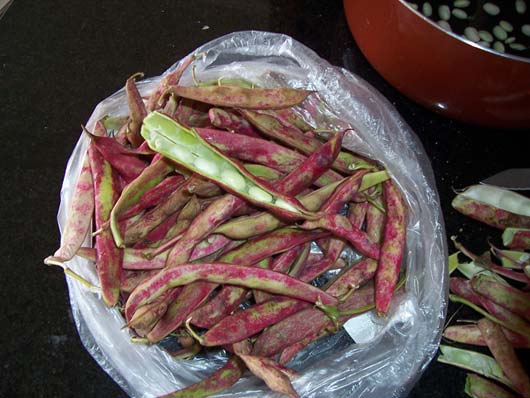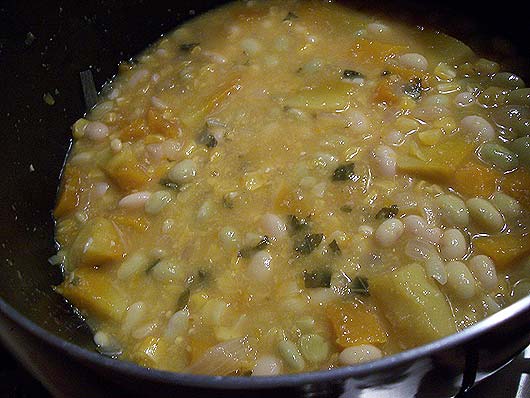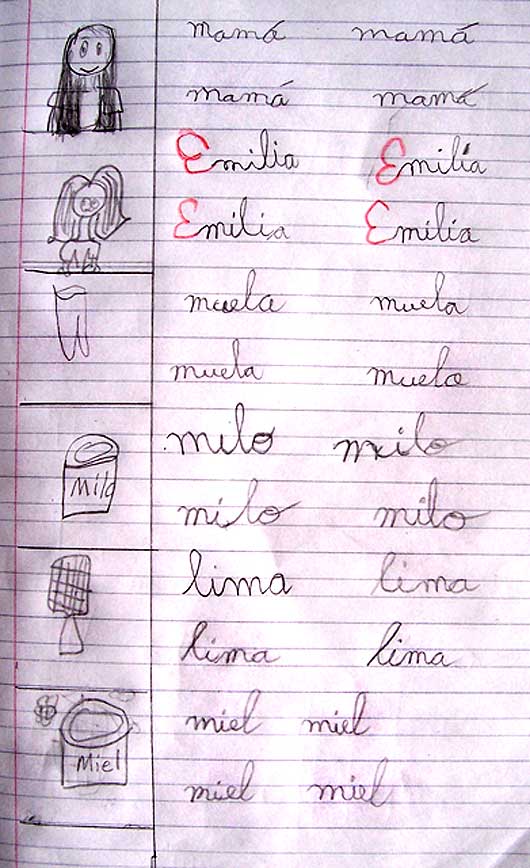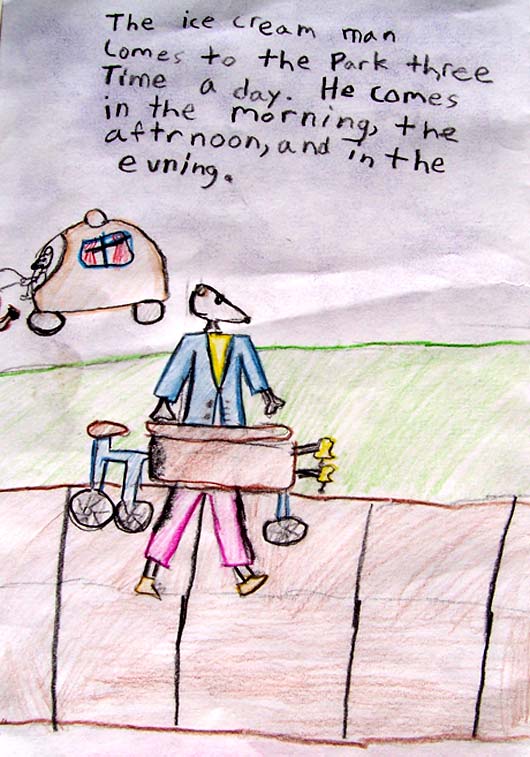HOME - INTRODUCTION - CAST
Doing Lunch When you come into the school's lunchroom (the "Casino") ready to eat a yummy lunch, you always smell the unpleasant odor of everyone's meat lunches. Hot dogs, lasagna, rice, fish, pizza, beef, chicken, etc. After that, I usually lose my appetite. About half of the kids buy lunch. They eat in a separate casino. I eat with the kids who bring their own. Most pack their food in a tupperware to microwave. Some bring it in a thermos. NOBODY has a sandwich or a pack of "Lunchables" for lunch. I usually take leftovers from the night before, like soup, rice, pasta, or lentils. Sometimes, we have "Porotos Granados," but we probably won't have that much longer because it is a summer crop. Porotos are beans, and we buy them fresh (in their pods) and use them to make a thick soup called "Porotos Granados" that is delicious and Mom has become an expert at it. Here are the beans we buy to make Porotos Granados:
Besides porotos, we add corn, pumpkin, onion, white wine, basil, and hot pepper to the soup. RJE and I both think this soup is OUTSTANDING, especially in our lunch.
At school, the line for the microwave is usually long. Everyone's always pushing and shoving to heat their lunch, and only about three tupperwares can fit in one microwave. Once, when I took my soup out of the microwave, I found out it was still cold when I tasted it, but the line was so long, I didn't have time to get back in it to microwave my food again. Plus, some kids are SO rude. The other day, RJE went to microwave her lunch, and when she came back, her chair was taken, and her "lonchera" (lunchbox) had been thrown across the floor. RJE sat down at another table and started to eat her lentils. Then, some older girls walked by and yelled: "Yeeeaaghhh!!" "Yuck!" I guess they don't like lentils. There are also a few of our classmates who sometimes take our food without asking. One of RJE's friends, for example, wanted RJE's cookie the other day, but RJE said NO because she really wanted to eat it herself. But her classmate said, "!Ya, po!" and took the cookie anyway! When I was in second grade at N.E.S., I learned to write in cursive for the first time. We also practiced some cursive in third grade. In Chile, they start in kindergarten, and in first grade students have to write everything in cursive. RJE is learning and doing very well. In class, they practice A LOT. Still, the students' writing is not very clear, and sometimes they can't even read it themselves. In my sixth-grade class, all the teachers (when they DO write on the board) write in cursive. ALL the kids write in cursive, too. Why is cursive so important here, and not in the United States? Here is a sample of RJE's cursive from one of her notebooks:
When we have time on weekends, RJE and I have been writing stories. RJE has a short one (with a drawing) about the ice-cream man we used to see every day at the park in the summer. We still see him, but not that often.
RJE is also writing a story about an Eskimo family, and I am writing one about the Easter Bunny (when he was little) since it was Easter last week. Talking about Easter, they call it "Pascua" here. Easter Island is "Isla de Pascua." There is also a kind of bread that is like a cake called "Pan de Pascua." It is very good and has pieces of dried fruit, raisins, walnuts, almonds, anise seed, and vanilla in it. The strange thing is that they only make or sell this Pascua bread during Christmas, not Easter. So why is it called Easter Bread? Nobody knows. And why do they call Santa Claus the "Viejito Pascuero" (Little Old Easter Man)? Dad says it's just one more of those "Chilean mysteries." Write back to the rats at The RatSoap™ Project is a work in progress, 2006-2007
|




